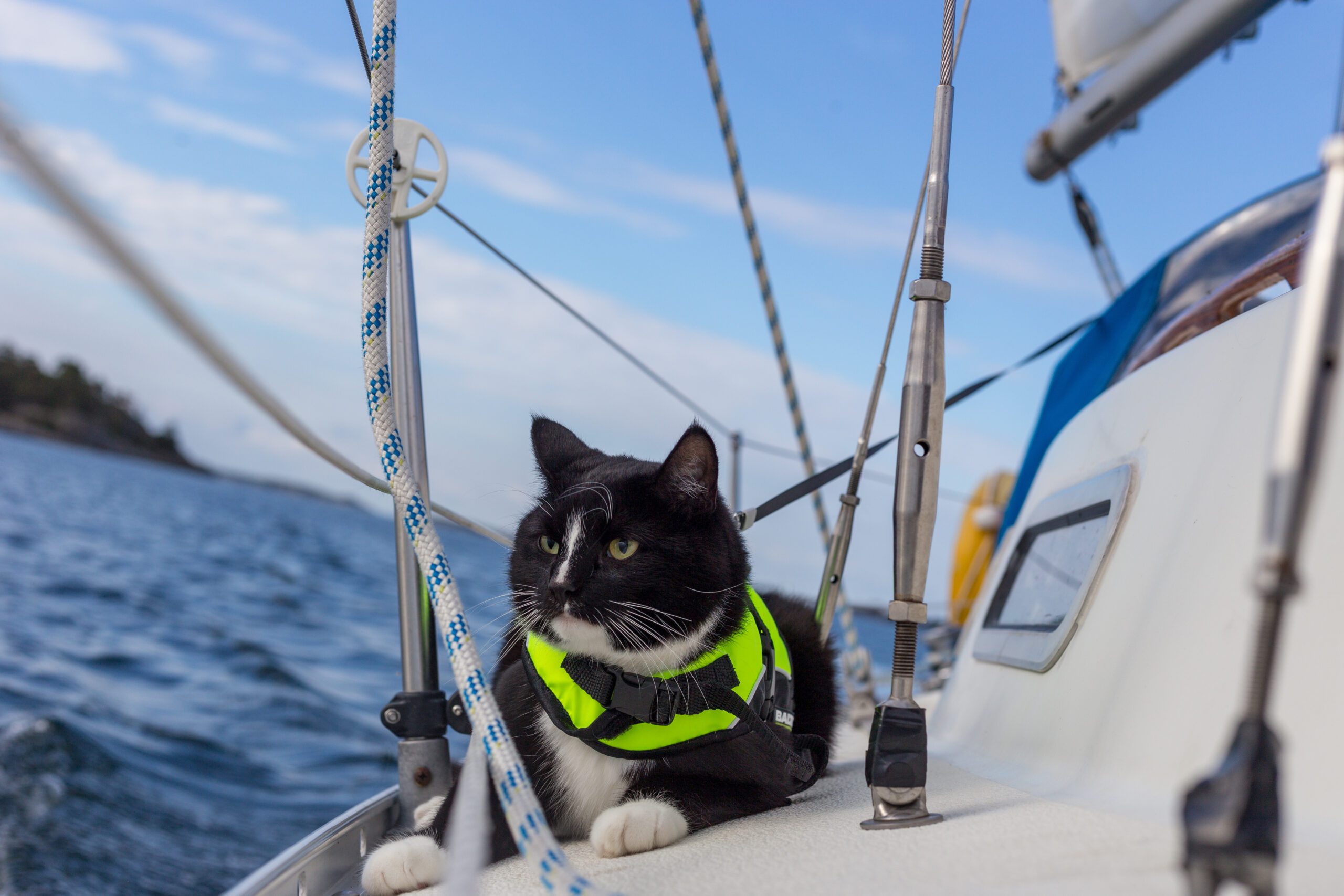
Tips For Boating With Pets This Summer
Planning to take your best friend along on your next boating adventure? That sounds like fun! Anyone would agree there’s nothing better than sharing the things you enjoy with the ones you love. But if that hobby is hitting the open water and that one you want to share it with is four-legged, furry, and lacks opposable thumbs, there are just a few things to consider!
Whether cruising the open seas, exploring lakes and rivers, or simply relaxing on the dock, boating with pets can be a fun and exciting excursion. However, ensuring your pet’s safety is always a top priority. Here are some essential tips for boating with pets to keep them safe, happy, and comfortable.
Pet Life Jackets For Boating
Just like humans, pets need life jackets on a boat. Even if your pet is a strong swimmer, accidents can happen, and a life jacket will only provide extra support and buoyancy. Just be sure to choose a life jacket that fits properly and has a handle on the back for easy lifting in an emergency. Additionally, training your pet to wear a life jacket and ensure their comfort before you even hit the water is essential.
Weather Monitoring in Advance
You should always monitor the weather before taking pets on a boat. Before setting sail, check the forecast to gauge the weather conditions in advance. Strong currents, high winds, and choppy waters can all pose a safety risk to both you and your pet. If the conditions aren’t favorable, it wasn’t meant to be! It’s best to postpone your boating trip to a week or weekend when the weather is on your side.
Pre-Boating Checkup
Before taking pets on a boat, conduct a check-up on both your pet and your boat. By this, we mean before you leave for your excursion, ensure your pet is in good health. Schedule a visit with your veterinarian to ensure your pet is current on vaccinations and medication. This will help prevent any health issues from arising on your trip.
Additionally, you’ll want to prepare your boat for your furry friend and make sure it’s as pet-friendly as possible. This includes ensuring plenty of space for your pet to move about, securing any loose items, and tucking away or removing any dangerous items that pose a safety threat.
Ensure Your Pet’s Comfort
When going boating with pets, their comfort should be a top priority. Some dogs love to be in or around water, and some would rather stay far, far away. It’s important to pay attention to what your pet is telling you.
If they opt to join you, be sure to provide them with a comfortable place to hang out and rest, and consider bringing a blanket or pet bed to help make them feel more at home. Also, be mindful of the noise and movement of the boat, as some pets may find this overwhelming.
Food & Hydration
You hear it constantly; hydration is key, especially in Arizona. Like humans, pets can become dehydrated, and being out in the sun and heat expedites dehydration. Avoid giving your pet water from the ocean or lake, as it may contain harmful bacteria. Instead, pack a cooler of water for you and your pet to enjoy and ensure the boat offers some shade for you both to rest in.
Additionally, before boating with pets, make sure they’ve had a healthy breakfast, free of any salty food, as this can cause dehydration. Consider bringing along some lunch or extra snacks for the time spent at sea.
Sun Protection
Believe it or not, animals can get sunburned, especially if they have short or light-colored fur. As you would to protect yourself against those harmful UV rays, apply pet-safe sunscreen to any exposed areas like ears, nose, and belly. And again, ensure your boat offers plenty of shade for your pet’s safety and comfort.
Training Basic Commands
Training your pet to respond to basic commands is essential when boating with pets. This is not done in a day, so when planning your next trip, get started on training commands that will keep them safe and responsive when the time comes to hop on the boat. The commands you should consider getting down pat beforehand are to come when called, stay put when needed, and never exit the boat without your permission.
Dock Safety
That training will come in handy when docking the boat. Make sure your pet is comfortable with the boat before boarding and deboarding, and consider taking them on a short practice trip before a long journey.
You’ll want to ensure your pet is leashed and secured when docked and ready to exit the boat. Choppy water and slippery docks can be dangerous for your pet, so keeping them close and secure is essential.
Emergency Planning
Accidents can happen, so it’s crucial to have an emergency plan in place in the instance something goes wrong. Plan for emergency transport and communication, always keep a fully stocked first aid kit on board and know how to perform pet CPR. It’s also a good idea to keep your vet’s contact information on hand, just in case.
Pet-Friendly Boating Destinations
Lastly, when planning your trip, choose pet-friendly boating destinations. Not all beaches, lakes, and rivers allow pets, and we want to ensure your furry friend is welcome wherever you go Some popular pet-friend boating destinations in Arizona include Lake Powell, Bartlett Lake, and Lake Havasu. Just be sure to check out the rules and regulations before heading out with your pet.
Remember, boating with pets can be a fun and rewarding experience, but it’s important to prioritize their well-being above all. Following this guide can ensure a safe and enjoyable day on the water for everyone who comes along. So, pack your bags, grab your life jackets, and get ready to set sail this summer. Happy boating!

